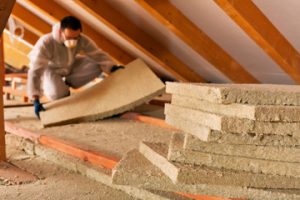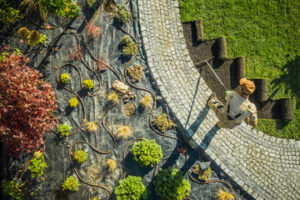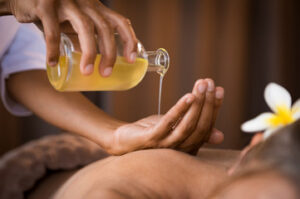Piano Moving Denver is a big job that requires specialized equipment. Professional movers use dollies, straps and moving pads to protect the instrument. They also carefully plan the move to minimize damage.
Before you begin, clear a path and remove any furniture or rugs that might impede your way. Enlist helpers and prepare the transportation vehicle.
1. Prepare the Piano

Pianos are large, heavy instruments that present unique logistical challenges during relocation. They require careful disassembly, proper packing materials, and specific handling techniques to minimize damage. Proper preparation helps avoid costly mistakes and minimizes risk of injury to movers and to the instrument itself.
Start by securing the piano’s parts, including locking the keyboard lid to prevent it from opening during the move and covering the instrument with blankets for cushioning against bumps during transit. It is also important to enlist help for moving the piano, as it is too heavy to lift on your own. Ensure that everyone involved understands their role and communicates clearly, so that the move can be completed safely. For a better chance of success, it is recommended to use professional-grade equipment such as piano dollies and straps.
Before beginning the move, carefully plan the route to be taken and make sure that the piano will fit through all doors, staircases, and hallways along the way. Clear a path and remove any obstacles that may hinder the move, such as furniture or boxes. For safety, it is a good idea to have one person steady the piano from the front while others provide support from the sides.
Once the piano has been positioned on a dolly, secure it to the dolly with ratchet straps. Make sure that the straps are tight enough to keep the piano from shifting during transportation. You should also add padding or blankets around the piano to protect it from scratches and scrapes.
During the actual move, take it slowly and gently to avoid excessive stress on the piano. Be prepared for unexpected obstacles that might arise, and plan accordingly by preparing an alternate route. Avoid sudden movements or forceful pushing, as this can cause the piano to tip over and damage the floor. Instead, be sure to maintain a firm grip and guide the piano with care.
Taking breaks while moving the piano is a good idea, as it reduces fatigue and increases safety. For long-distance moves, or complex moves with stairs or multiple story buildings, hiring a professional may be the best option.
2. Secure the Piano
Pianos are heavy and bulky, and they present unique physical and logistical challenges during moving. They can easily get damaged when dropped, bumped into walls or other furniture, dragged across floors, or jostled around in the back of a truck during transport. Repairing these damages can be very costly, so it’s important to secure your piano properly for moving.
To secure your piano, first lock or shut the lid to prevent it from opening during the move. Wrap the legs and pedals in thick padding or blankets to prevent scratches. Before the move, clear a path through your home by removing any furniture, boxes, or other items that could get in the way. Next, prepare the piano for transport by placing it on a dolly centered under its heaviest portion. Be sure to save any screws or small hardware in a labeled bag, and then secure the dolly to the vehicle with straps.
During the move, it’s important to have enough help to handle the weight of your piano. Even a strong person can become fatigued during a long move, and improper lifting techniques can damage the instrument. For this reason, it’s best to hire professional movers to ensure the safety of both you and your piano.
If you decide to move your piano yourself, be sure to consult the manufacturer’s guidelines and user manual for specific instructions on how to secure it. Also, be sure to use a dolly that’s designed for the type of piano you have. Using the wrong dolly could result in damage to the piano and injury to the movers.
Finally, plan your move for an off-peak time to avoid higher prices and traffic congestion. You’ll also want to select a day with good weather conditions to reduce the risk of delays or complications during transit. Finally, be sure to take the time to thoroughly inspect your piano before and after the move for any signs of damage or other issues that may need attention. By taking the time to secure your piano, you can be confident that your instrument will arrive at its new home in excellent condition.
3. Wrap the Piano
It is essential to wrap the piano before you try to move it. This will protect the surface from scratches and dents during the moving process. A thick, padded blanket will be the best option for this purpose. The blankets should be large enough to cover the entire surface of the piano. You should also use tape to secure the blankets in place. Be sure not to let the tape touch the wood surface of the piano. This will ruin the wood and cause damage to your piano.
Once you have the piano completely wrapped, you can begin the actual moving process. You will need at least two strong movers to lift the piano and a dolly to transport it. The dolly will help to balance the piano, which is important to prevent injury to the movers and to ensure that the piano doesn’t suffer any damage during the move.
Before you start to move the piano, make sure you have a clear path and destination figured out. This will help you avoid taking the piano through passageways that it may not fit through, and it will also allow you to plan your route accordingly. It is also a good idea to measure the doors, staircases, and hallways that you will be using during the moving process. This information will be helpful in ensuring that the piano can fit through all of the necessary doors and staircases without any problems.
Once the piano is loaded into the truck, it is important to secure it properly to prevent any movement during transit. You should also remember to pack the legs, pedals, and bench securely to avoid any damage. It is also a good idea to have the truck ramp in place before you load the piano, as this will make it much easier to maneuver and secure the piano in the truck.
Once the piano is inside the new home, it will need to be re-tuned. This is a crucial step to ensure that the piano sounds the way it should, and it is important to take your time to ensure that everything is done correctly.
4. Move the Piano
Pianos are heavy and awkward, and they require a lot of physical strength to maneuver. It’s also important to be aware of the risk of injury, as a lack of preparation and proper equipment can lead to costly damage. To avoid these dangers, you should always consider hiring professional piano movers to transport your instrument. Professionals are equipped with specialized lifts, furniture dollies, straps, and pads to protect the piano from scratches or dents during transportation. They’re also familiar with the unique requirements of each type of vehicle and know how to properly secure the piano for safe transport.
When moving a piano, it’s best to have a minimum of three people. This will reduce the chances of injury and make the process much more efficient. Additionally, you’ll want to ensure that you have a vehicle large enough to accommodate the piano, as well as any necessary ramps or equipment. Lastly, you should wear comfortable clothing and shoes, as the process will be physically demanding.
Once you’ve gathered your team, begin by placing the piano on a furniture dolly. This will make it easier to roll the piano along flat surfaces and will prevent injuries caused by lifting or carrying. Before you place the piano on the dolly, it’s important to note any areas that may require special care, such as door entryways or transitions from hardwood to carpet.
Next, have one person stand behind the piano to keep it from shifting while another person carefully guides the dolly under it. Once the piano is securely on the dolly, it’s time to load it into your transportation vehicle. To do this, make sure the tailgate is down and that the vehicle is clear of any obstacles. You’ll also want to grab a few extra furniture pads to protect the piano from rubbing against the sides of the truck.
While there are some situations in which it’s acceptable to wing it, moving a piano is not one of them. Without the right equipment, sufficient manpower, and a clear plan of action, it’s almost certain that you’ll end up damaging your instrument or injuring yourself. It’s far better to hire professionals than to try and save a few bucks.



